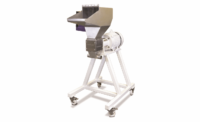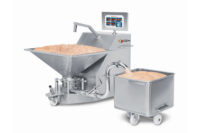Remodeling Product Quality Techniques
I went searching for an idea upon which to build this month’s message and found appealing grist in my office at home, where I stockpile hundreds of fiction and non-fiction books, along with clips of articles penned by me and others over the years, among other literary gems. Friends and family constantly deride me, advising me to downsize my store of stuff. Why do you keep all that stuff, you can’t possibly use it?
Good thing I don’t heed their worthless advice, as I unearthed a 1988 Fortune magazine article I saved because it addresses issues concerning product quality. You will note this article predates my association with this magazine. Vindication is the sweetest succor for somebody like me. I suspect there are those among you who enjoy singing the same tune, especially concerning a product-development initiative coupled with a winning marketing and promotional strategy — an oxymoron? What a word.
Here is a true story with an oxymoronic twist. My friend once worked with the creator of TV commercials aired in the ‘70s touting Alka-Seltzer®. You may remember the spots featuring the bride who sent her husband to the medicine cabinet every time she cooked, especially “spicy meatballs.” I don’t recall these particular commercials. I do, however, remember plop, plop, fizz, fizz. In any event, the spicy meatballs commercials caught the fancy of viewers who found them delightfully entertaining. For some reasons their delight did not show up as increased sales, which dropped dramatically for the company during the commercial run. Yes, there is a moral to the story. The operation was a success, but the patient died.
Now, what does this mean for us in the industry? The answer comes from that 1988 Fortune report promising to reveal how product quality concerns helped U.S. manufacturers become the “world’s top competitors.” Here are a few excerpts.
The best products are designed not so much to meet specifications and fulfill customer requirements, as they are to match or surpass customer expectations.
The form of an excellent product suits its function, and its innovation is evident.
Processed-food companies have always been extremely innovative about packaging, not only to attract consumers who want convenience, but also to win the fight for shelf space.
Innovation can occur by serendipity: In fact, it usually does.
Between innovation and production comes product design. The fewer the parts, the smoother the assembly process, and the more reliable the final product.
Upgrading quality on the factory floor requires that manufacturers ride herd on their suppliers to improve the parts they deliver. Once the parts are on hand, the assembly process must be done correctly from start to finish, with little or no tolerance for the post-assembly repairs known as “rework.”
The commitment of the senior people to the quality process is unquestioned at the companies that make the best products.
The last ingredient for maintaining quality — and the single most important one — is that sales-force bromide: Know your customer. There is a better-educated, more cynical buyer out there with little patience for poor quality. He wants products that work the first time and is willing to pay for them. To respond to customers’ changing needs and expectations, the manufacturer must be nimble. Flexible manufacturing helps.
For the customer, quality is irresistible. For industry, it is essential.
The form of an excellent product suits its function, and its innovation is evident.
Processed-food companies have always been extremely innovative about packaging, not only to attract consumers who want convenience, but also to win the fight for shelf space.
Innovation can occur by serendipity: In fact, it usually does.
Between innovation and production comes product design. The fewer the parts, the smoother the assembly process, and the more reliable the final product.
Upgrading quality on the factory floor requires that manufacturers ride herd on their suppliers to improve the parts they deliver. Once the parts are on hand, the assembly process must be done correctly from start to finish, with little or no tolerance for the post-assembly repairs known as “rework.”
The commitment of the senior people to the quality process is unquestioned at the companies that make the best products.
The last ingredient for maintaining quality — and the single most important one — is that sales-force bromide: Know your customer. There is a better-educated, more cynical buyer out there with little patience for poor quality. He wants products that work the first time and is willing to pay for them. To respond to customers’ changing needs and expectations, the manufacturer must be nimble. Flexible manufacturing helps.
For the customer, quality is irresistible. For industry, it is essential.
Besides giving me something to write about, this article penned by Christopher Knowlton appeals to my belief in the value of remodeling. Interestingly, all the points above, in my opinion, still apply. The more things change, the more they stay the same.
Sincerely yours








